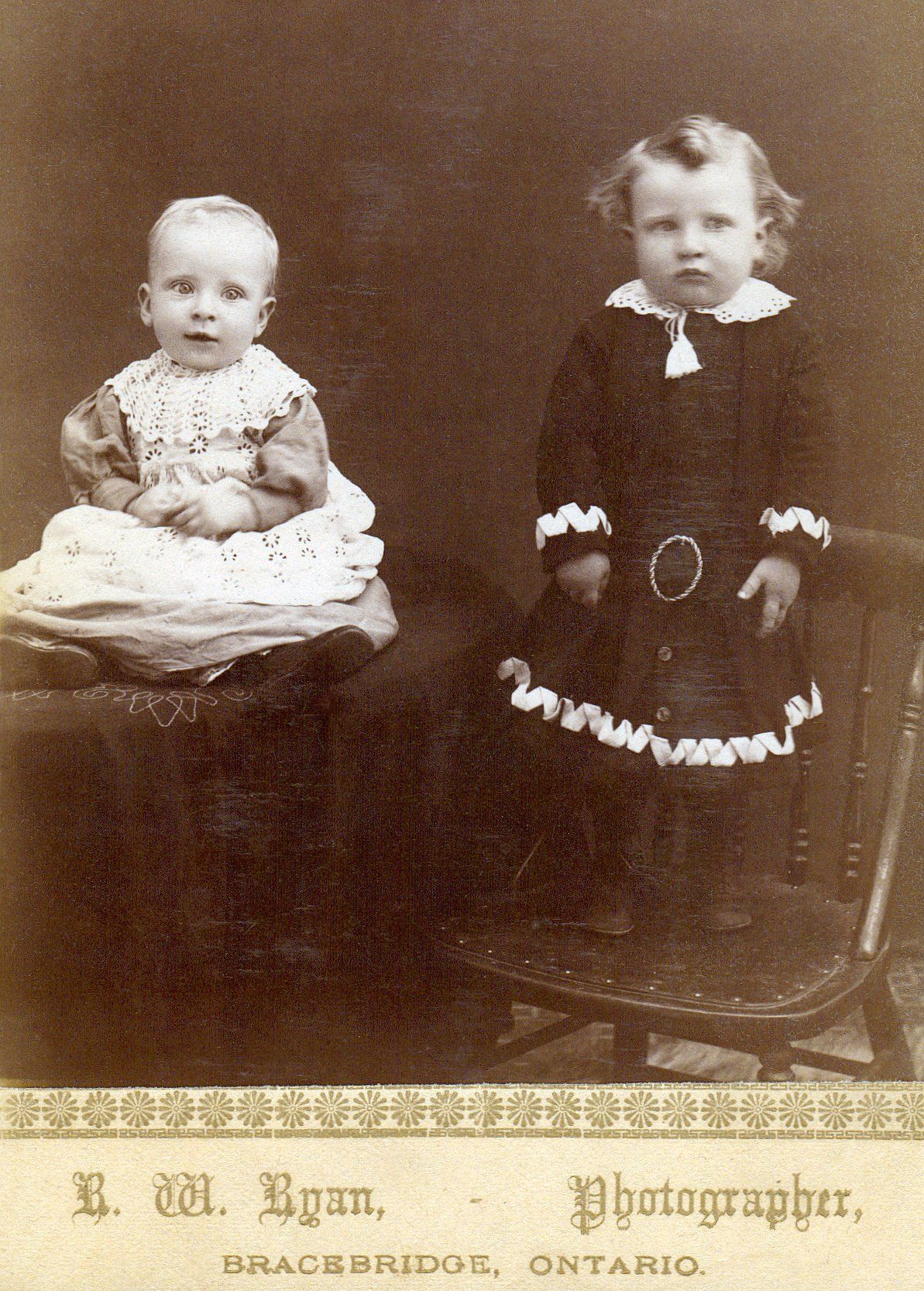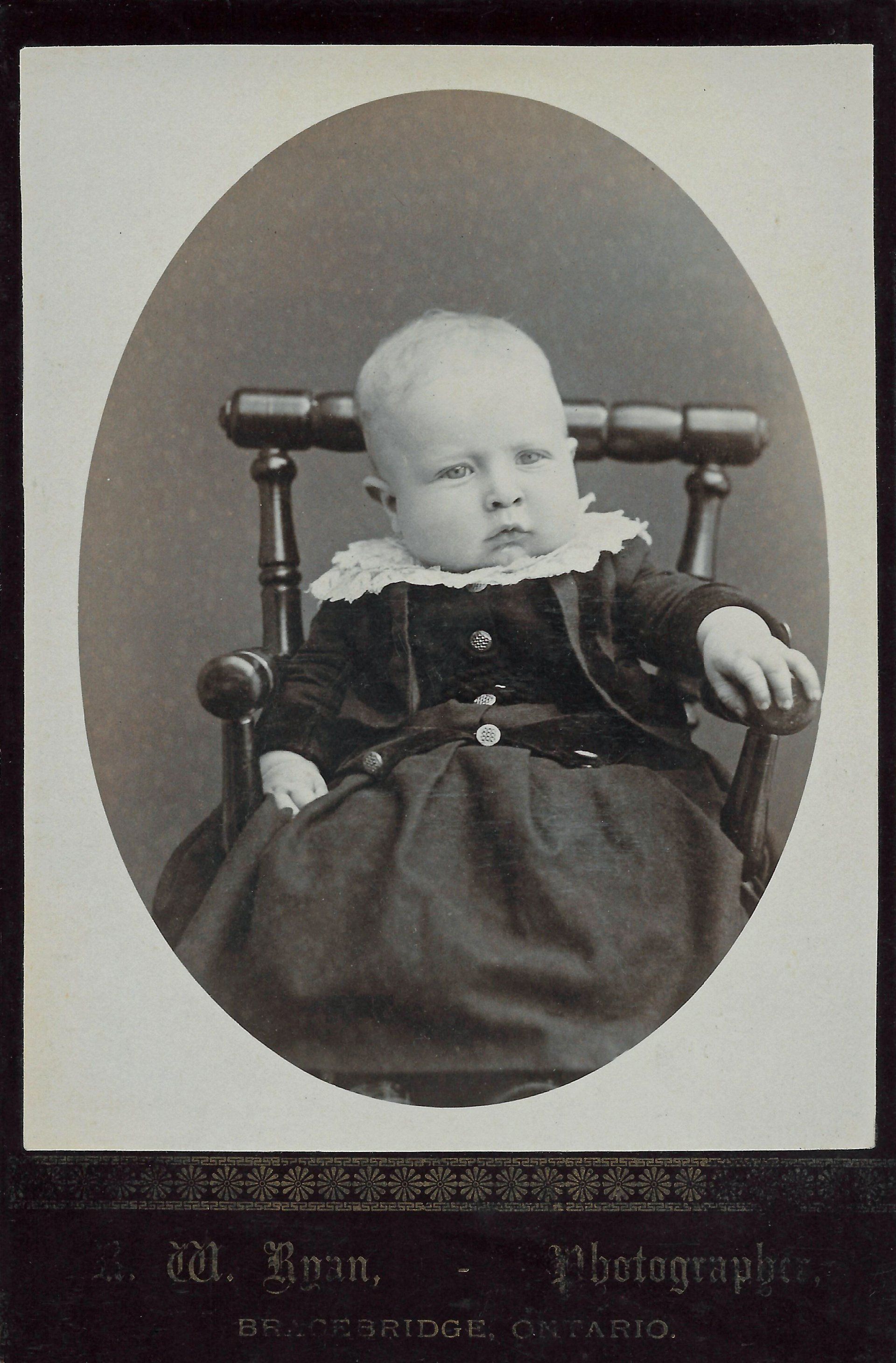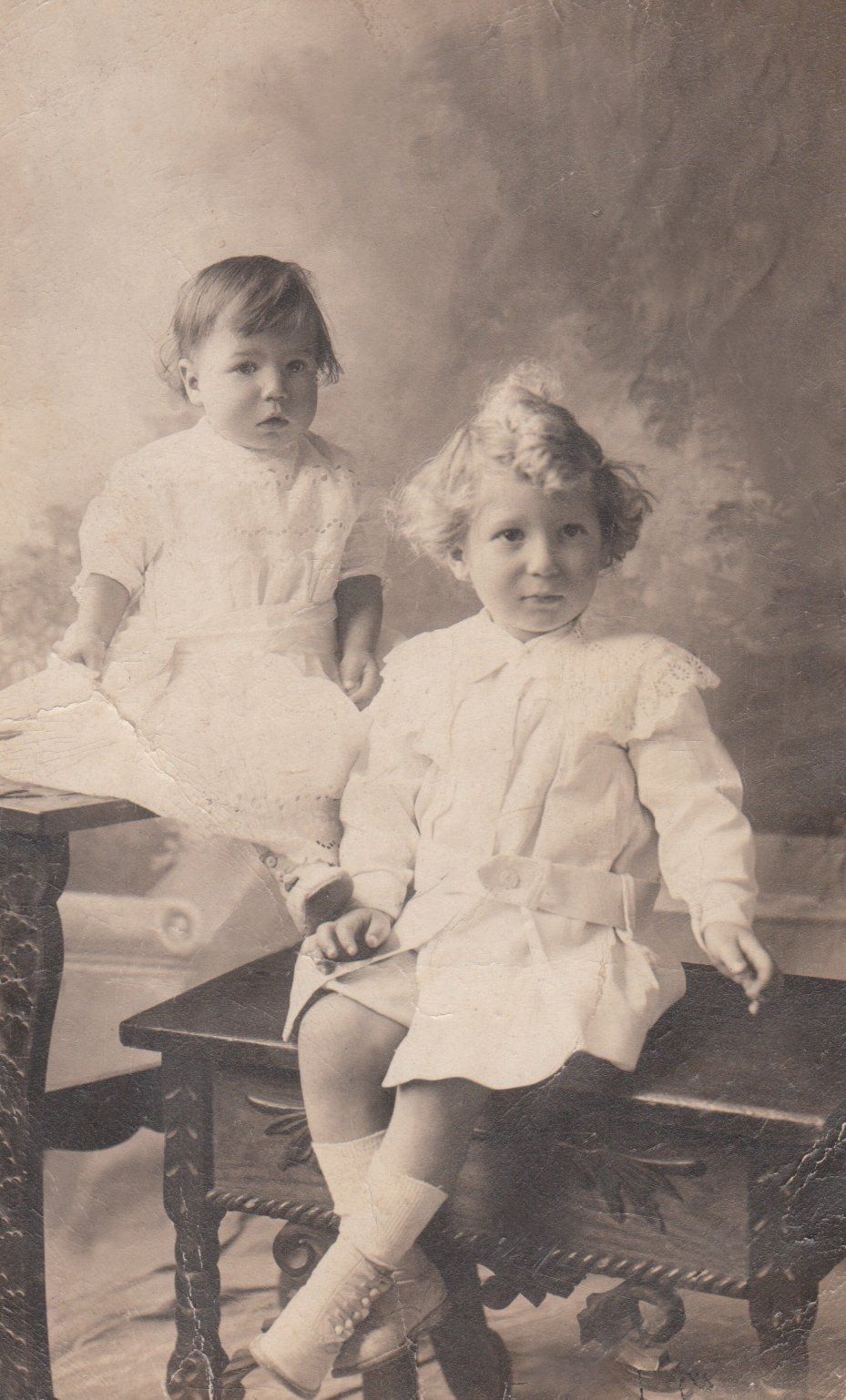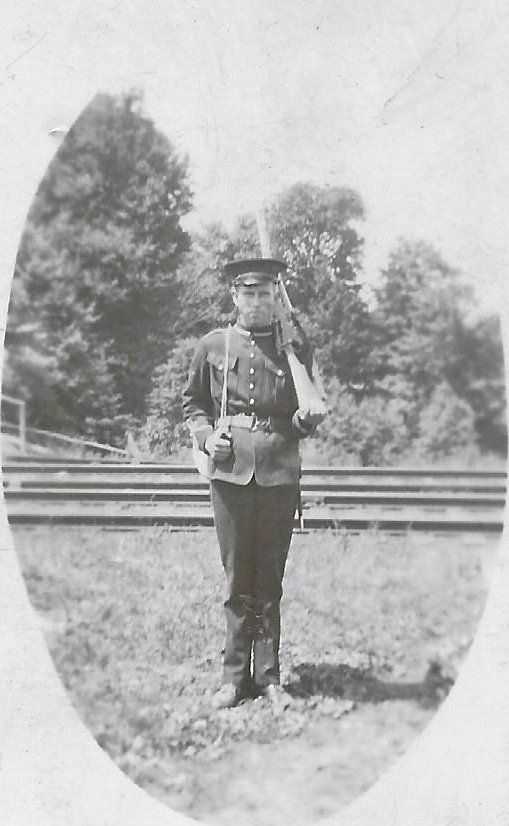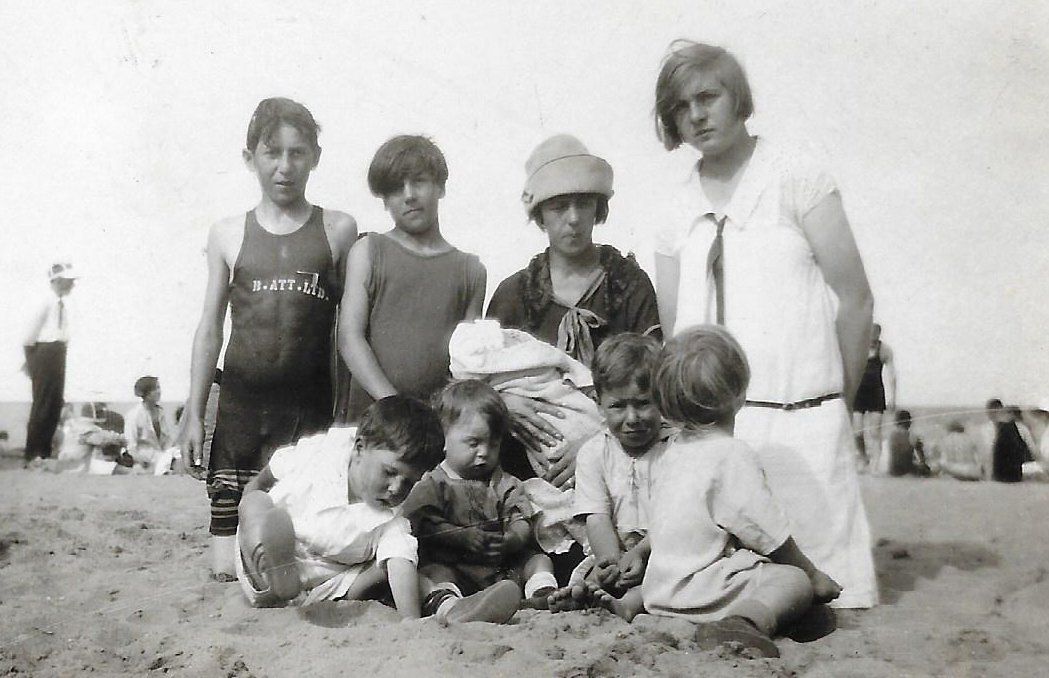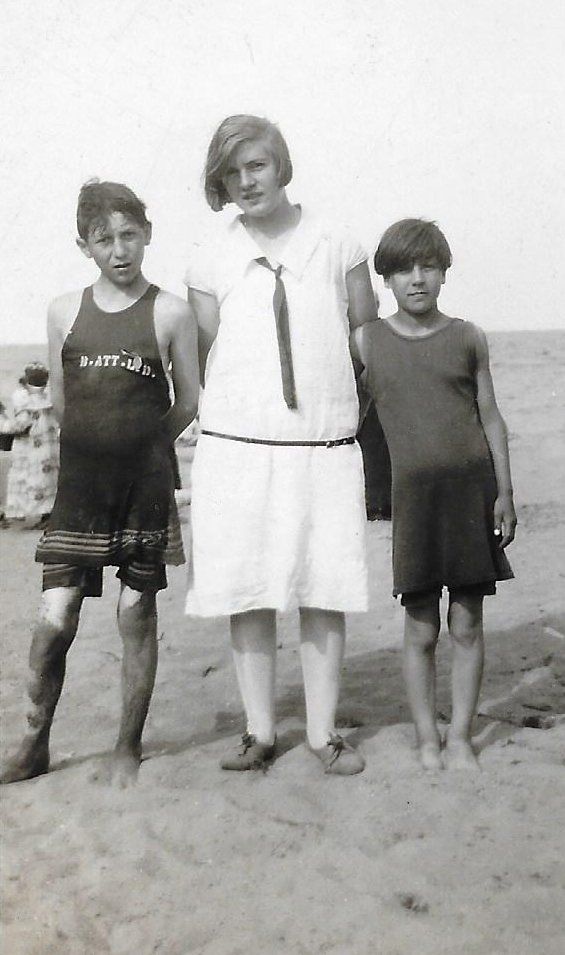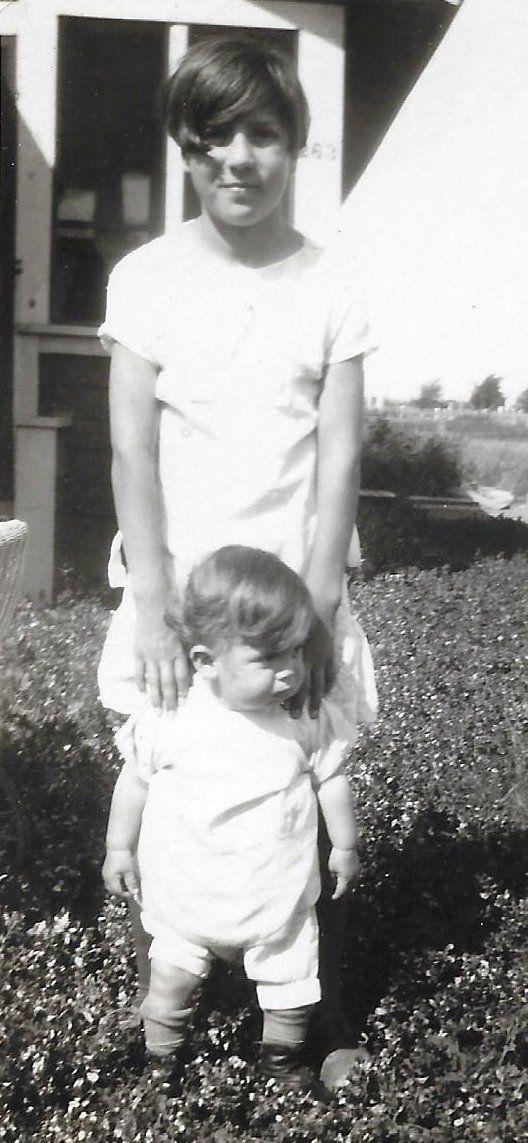Frederick Charles Forth
Frederick Charles Forth, eldest child of Harry and Lucy, was born February 27, 1889 in Utterson, District of Muskoka. The first photo I found of Fred was the one on the left with his younger brother, John Albert (Jack). The photo was labelled. I have since found a second photo that was not labelled, but I believe it to be a baby photo of Fred. The photographer is the same and the chubby little cheeks and pouty mouth look identical to me in both photos. But I leave it to you to be the final judge.
Fourteen-year-old Fred was the informant on the birth record of his brother, Edward Lawrence in 1903, and for his brother, Arthur Milton, in 1904. I think what I found most fascinating about this was that he would have had to walk from Utterson into Bracebridge to register the births. Children had so many more responsibilities at a young age than they do today!
On the 1911 Census, 22-year-old Fred was recorded as boarding with his uncle and aunt, William James Scott and Margaret Jane Anderson, who lived in Toronto. He was listed as a labourer. His uncle was working at the Lambton Shale pits at the time, so it is quite possible that Fred was working there with him.
I have no idea when Fred moved west, but he married Sarah Jane “Minnie” Steel in Moose Jaw Saskatchewan on November 13, 1913. She was from Scotland. Fred’s brother, Frank, enlisted in the Canadian Expeditionary Force in 1915 from Moose Jaw, so it is plausible that the two brothers had gone west together.
For the next two weeks, all four divisions of the Canadian Corps took turns assaulting Passchendaele ridge in four separate attacks. During the first two — on 26 and 30 October— Canadian gains measured only a few hundred metres each day, despite heavy losses. So fierce was the fighting that one battalion, the Princess Patricia's Canadian Light Infantry, lost almost all its junior officers only an hour into the assault on 30 October.
Under almost continuous rain and shellfire, conditions for the soldiers were horrifying. Troops huddled in shell holes, or became lost on the blasted mud-scape, not knowing where the front line was that separated Canadian from German positions.
"Our feet were in water, over the tops of our boots, all the time," wrote Arthur Turner, an infantryman from Alberta. "We were given whale oil to rub on our feet . . . this was to prevent trench-feet. To solve it I took off my boots once, and poured half the oil into each foot, then slid my feet into it. It was a gummy mess, but I did not get trench-feet."
The mud gummed up rifle barrels and breeches, making them difficult to fire. It swallowed up soldiers as they slept. It slowed stretcher-bearers — wading waist-deep as they tried to carry wounded away from the fighting — to a crawl. Ironically, the mud also saved lives, cushioning many of the shells that landed, preventing their explosion.
"The Battle for the Passchendaele Ridge," wrote Turner, "was without doubt one of the Muddy-est, Bloody-est, of the whole war."
Britain's future wartime prime minister, Winston Churchill, called Passchendaele "a forlorn expenditure of valour and life without equal in futility."
A century later, Passchendaele remains one of the most controversial episodes of the war.
Fred was eventually discharged from the hospital on May 24, 1918 and demobilised from the army on February 17, 1919 in Winnipeg. I am sure he was delighted to be home with his wife, Minnie, and young children whom he likely hadn’t seen for nearly three years.
By 1921, Fred had moved his family to 317 Vaughn St., in Winnipeg and was once again working as a carpenter. The following photos, circa 1927, show the family in happy times. I have added names to the best of my ability. If you are aware of errors, please do contact me!
Cousin Sharon Abel shared information about the bathing suit Freddie Forth is wearing. In the 1920’s bathing suits were rented from the company whose name is shown on the front of the bathing suit. While the beach photos could certainly be from any number of beaches around Lake Winnipeg, it is quite possible these were taken in the resort town of Winnipeg Beach on the western shores of Lake Winnipeg. The resort towns were all accessible by rail. How interesting that people would not own their own bathing suits!
Fred and Minnie were the parents of seven children: Frederick Charles, Lillian Viola Ruby Lilburn, Alfred Lawrence, John William, Gordon Steele, Albert Francis, Elizebeth Jane Lilburn, and they were the grandparents of 30 grandchildren! Their son, John William, a.k.a. Jack Forth, returned to his roots in Muskoka, raising a family of eleven children in Gravenhurst, Ontario, along with his wife Theresa Mary Davidson. Sometimes, the world is very small and we don’t even know what is around us – or in this case, who is around us. Jack’s son, the late James Charles (Jim) Forth, and his wife had three sons. I taught all three boys in school and at the time had no idea they were actually my second cousins once removed!
Frederick Charles Forth passed away in Winnipeg on February 6, 1980, just three weeks shy of his 91st birthday. His wife, Sarah Jane “Minnie” Steele, had predeceased him in 1976. Fred and Minnie are buried in the beautiful Brookside Cemetery in Winnipeg, Manitoba.
